Ongoing projects
In DENIS@home you can run different research projects. Each one uses a different application that you can choose to run or not. In the following sections you will be able to learn a bit of each one.
- Beta of DENIS-myocyte (DENIS_Myocyte_Beta): Beta version of the simulator used in all the projectsDENIS@home. Every modification of the simulator is tested under this application.
- New human ventricular cell model (NHuVe): Development of a new version of the model proposed by Carro
et. al (2011). - Human ventricular cell models optimization (HuVeMOp): Optimization of the public and most used human ventricular cell models for the representation of electrophysiological markers.
Beta of DENIS-myocyte (DENIS_Myocyte_Beta)
Every project in DENIS@home uses the DENIS-Myocyte simulator. This program permits to simulate any model described following the CellML standard
To thank the altruism of testing the app, all volunteers who run the beta app get a special badge:

| Beta of DENIS-myocyte (DENIS_Myocyte_Beta) (beta test) | |||
|---|---|---|---|
| Platform | Version | Created | Average computing |
| Microsoft Windows running on an AMD x86_64 or Intel EM64T CPU | 0.23 (beta test) | 19 Jun 2023, 17:14:53 UTC | 1,943 GigaFLOPS |
| Linux running on an AMD x86_64 or Intel EM64T CPU | 0.23 (beta test) | 19 Jun 2023, 17:14:54 UTC | 2,074 GigaFLOPS |
| Intel 64-bit Mac OS 10.5 or later | 0.23 (beta test) | 19 Jun 2023, 17:14:55 UTC | 34 GigaFLOPS |
| Linux running on ARM64 | 0.23 (beta test) | 19 Jun 2023, 17:14:52 UTC | 60 GigaFLOPS |
| Mac OS running on ARM | 0.23 (beta test) | 19 Jun 2023, 17:14:55 UTC | 45 GigaFLOPS |
New human ventricular cell model (NHuVe)
Models of Action Potential (AP) have been largely used to study the behavior of the heart in normal or pathological conditions. One of the problems to develop these models is the difficulty to validate the model against all the known experimental situations.
On the other hand, manytimes we need to asume that the model variables are independents. As our previous research shows, this assumtion could be a problem (Carro
Actually, we are working on an optimization algorithm based on response surface aproximations to calculate the value of parameters of the model that can't be measured directly (Carro
We are developing a new version of the Carro
Phases
- Identification of the shape problem cause (completed)
- Modification of the model to solve the shape problem (completed) The results of this phases was publised on the conference EMBEC 2017: Multiscale Methods for Definition of Ionic Variables in Electrophysiological Models
- Identification of the restitution problem cause (completed)
- Modification of the model to solve the restitution problem (completed)
- Optimization of ionic conductances to fit physiological markers (completed)
- New version of the optimization to try to fit better the physiological markers (ongoing)
| New human ventricular cell model (NHuVe) | |||
|---|---|---|---|
| Platform | Version | Created | Average computing |
| Microsoft Windows running on an AMD x86_64 or Intel EM64T CPU | 0.03 | 23 Jan 2023, 16:09:38 UTC | 2,646 GigaFLOPS |
| Linux running on an AMD x86_64 or Intel EM64T CPU | 0.03 | 23 Jan 2023, 16:09:39 UTC | 3,441 GigaFLOPS |
| Intel 64-bit Mac OS 10.5 or later | 0.03 | 23 Jan 2023, 16:09:48 UTC | 188 GigaFLOPS |
| Linux running on ARM64 | 0.03 | 23 Jan 2023, 16:09:35 UTC | 106 GigaFLOPS |
| Mac OS running on ARM | 0.03 | 23 Jan 2023, 16:09:55 UTC | 356 GigaFLOPS |
Human ventricular cell models optimization (HuVeMOp)
In the recent years, several human ventricular cell models have been proposed. Although some parts of the models have a similar structure, others are completely different. Also, since the models are made at times when the experimental evidence is different, and sometimes each one uses different data sets, each model could be optimized for different circunstances.
What happens if different models are optimized with the same data? What happens if we redefine the rol of the different currents each model has? The currents will be the same as in the original model, but, are the differences caused by the current or by its role? We want to analyze this.
To be able to compare the models in this ways, we need to apply the our optimization algorithm to all of them (Carro
The models that are been optimized in this project are:
- TP06: Alternans and spiral breakup in a human ventricular tissue model. K. H. W. J. ten Tusscher and A. V. Panfilov, 2006. American Journal of Physiology-Heart and Circulatory Physiology 291:3, H1088-H1100
- GPB: A novel computational model of the human ventricular action potential and Ca transient, E. Grandi, F.S. Pasqualini, D.M. Bers, 2010. Journal of Molecular and Cellular Cardiology, volume 48, 112-121. PubMed ID: 19835882
- CRLP: A human ventricular cell model for investigation of cardiac arrhythmias under hyperkalaemic conditions. J. Carro, J.F. Rodríguez, P. Laguna and E. Pueyo, 2011. Philosophical Transactions of the Royal Society A: Mathematical, Physical and Engineering Sciences. Volume 369, Issue 1954. doi: 10.1098/rsta.2011.0127
- ORd: Simulation of the Undiseased Human Cardiac Ventricular Action Potential: Model Formulation and Experimental Validation. T. O'Hara, L. Virág, A. Varró, Y. Rudy, 2011. PLOS Computational Biology 7(5): e1002061. doi:10.1371/journal.pcbi.1002061
| Human ventricular cell models optimization (HuVeMOp) | |||
|---|---|---|---|
| Platform | Version | Created | Average computing |
| Microsoft Windows running on an AMD x86_64 or Intel EM64T CPU | 0.02 | 22 Jun 2023, 18:41:25 UTC | 9,509 GigaFLOPS |
| Linux running on an AMD x86_64 or Intel EM64T CPU | 0.02 | 22 Jun 2023, 18:41:26 UTC | 6,200 GigaFLOPS |
| Intel 64-bit Mac OS 10.5 or later | 0.02 | 22 Jun 2023, 18:41:27 UTC | 299 GigaFLOPS |
| Linux running on ARM64 | 0.02 | 22 Jun 2023, 18:41:24 UTC | 740 GigaFLOPS |
| Mac OS running on ARM | 0.02 | 22 Jun 2023, 18:41:28 UTC | 1,163 GigaFLOPS |



